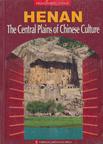全景中国
2006-1
外文出版社
杨长春
255
It is easy to have a quick look at China's past and present,but it takes time to gain a panoramic knowledge of China。The“Panoramin China”series is meant to assist reaers,especially those overseas,in this respect,Each volume in the series focuese on a province,municipaity or autonomous region,describing,with illustrations,the outstanding characertistics of each area from different perspectives。s past and present,but it takes time to gain a panoramic knowledge of China。The”Panoramin China”series is meant to assist reaers,especially those overseas,in this respect,Each volume in the series focuese on a province,municipaity or autonomous region,describing,with illustrations,the outstanding characertistics of each area from different perspectives。
Foreword:Center of ChinaThe Birthplace of Chinese Kungfu Shaolin——Source of All Martial Arts The Birt and Rise to Fame of Shaolin Dungfu Shaolin Kungfu and Zen Buddhism Shaoiln Boxing and Armed Combat Combat Techmiques Unique Skills of Shaolin Kungfu Chen Taijiquan Creation and Development of Chen Taijiquan Two Styles of Taijing The Benefits of Taijiquan ExerciseRoots of the Chinese People How Nuwa Creatde Man and Mended the Sky Making Mud into Man,China's Adam and Eve Melting Stones to Mend the Sky Home of the Yellow Emperor Great Deeds Xinzheng——Home of the Yellow EmperorCradle of Chinese Civilization The Yellow River:Mother River of Chinese Civilization China's Number One Dragons How Great Yu Tamde the Floods Ancient Stand-off at the Honggou Channel Kaifeng—Palything of the River The Daoning of Human Civilization Peiligang Culture Ruins in Xinzheng The Jiahu Ruins at Wuyang Yangshao Culture in Henan Longshan Culture in Henan The Erlito Ruins at Yanshi Splindid Chapters in Chinses History The Ancient Capital of Zhengzhou The Ancient Capital of Anyang The Ancient Capital of Luoyang The Ancient Capital of Kaifeng ……Cultural RelicsThe Land Shapes the ManAppendixes
书摘IntroductionChina has 23 provinces, four municipalities directly under the Central Government, five autonomous regions and two special administrative regions. Due to geographic and topographical differences and climatic varieties, each area has its own unique natural scenery. The mountains in the north of the country are rugged, the Gobi in the northwest shines brilliantly in the sunlight, the hills in the southeast are often shrouded in floating fog, green waves of sorghum and soybean crops undulate over the vast fields of the northeast, and the mountains in the southwest, with sequestered villages and terraced fields, look tranquil and picturesque.There are 56 ethnic groups in China. The Han, making up the overwhelming majority of the population, mainly live in the eastern and central parts of the country, while many ethnic groups, regardless of size, are equal and respect each other. Each ethnic group has its own folk customs, religious beliefs and cultural traditions, and most use their own language and script. Regional autonomy is practiced in areas where ethnic minorities live in compact communities. All the ethnic groups call themselves “Chinese.” They are courteous and friendly. In the ethnic-minority areas, the quiet environment, quaint buildings, exquisite fashions, unsophisticated folk customs and hospitality of the local people hold a great appeal to visitors from afar.China boasts 5,000 years of recorded civilization and a brilliant culture. The country is home to such world-renowned cultural treasures as the Great Wall, terracotta warriors and horses of the First Emperor of the Qin Dynasty, Mogao Grottoes at Dunhuang, and Ming and Qing imperial palace and mausoleums, and large numbers of ancient architectural masterpieces, including temples, Buddhist pagodas, residential buildings, gardens, bridges, city walls and irrigation works. There are also cultural relics unearthed from ancient sites, including painted pottery, jade ware, bronze ware, large and ornate tombs and foundations of historical buildings, and many more as yet undiscovered. The museum of China’s various provinces, municipalities and autonomous regions house of thousands of cultural relics and works of art, among which are treasures rare in the world, displaying the long history of China and the splendid Chinese culture from different aspects. The strong, deep-rooted Chinese culture has always influenced the mentality and moral standards of the Chinese people, having developed continually in pace with the civilization. A careful study of today’s Peking opera, kunqu opera, shadow plays, calligraphy, painting, paper-cutting, and even the flower-shaped steamed buns on the kitchen range of farmers will reveal elements of traditional Chinese culture as well as replications of the art of the past.Like other countries of venerable age, China has suffered grievous calamities. During the century and more before the 1950s, the Chinese people made unrelenting struggles for the prosperity of the country, and national independence and liberation. A large number of insightful people and revolutionaries, cherishing all kinds of dreams for a strong China, studied the ways of the West in a quest for prosperity and strength, and borrowed the revolutionary experience of foreign countries. At last, the Communist Party of China, proceeding from the reality of China, and relying on the working people, founded a brand-new country, the People’s Republic of China, in 1949. Since then, the Chinese people have made persistent efforts and explorations for the grand revitalization of the Chinese nation. The Chinese people’s efforts in the past two decades and more have resulted in outstanding achievements, with rapid social progress, a well-developed economy, and a modern civilization and traditional culture enhancing each other.It is easy to have a quick look at China’s past and present, but it takes time to gain a panoramic knowledge of China. The "Panoramic China" series is meant to assist readers, especially those overseas, in this respect. Each volume in the series focuses on a province, municipality or autonomous region, describing, with illustrations, the outstanding characteristics of each area from different perspectives. Through this series, the reader will acquire knowledge of the real and vivid daily life of the local people, the colorful society and the developing economy, assisted by relevant information.插图
一部有重点、有深度、有特色的展现中国全景风貌的书籍,您可以从中全景式了解中国,也从中了解中国全景。本书是丛书之一,要认识中国,了解中国文化和文明,河南是一个绝不能错过的地方,祖先们历来认为河南是“天下之中”,倘要探寻古老而神秘的东方文明,在这里多能找到入口和解读的钥匙。多年来,河南以它悠久的历史、灿烂的文化、丰饶的物产和开放的姿态给人们留下了深刻而美好的印象。本书将带你走近河南,去感受她的魅力。

送人的,简单看了下,印刷很精美,看着舒服。应该还不错,就是不知道内容过不过时。这种书当然内容是越新越好。